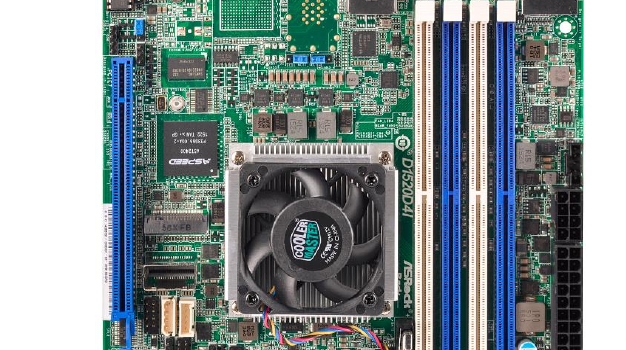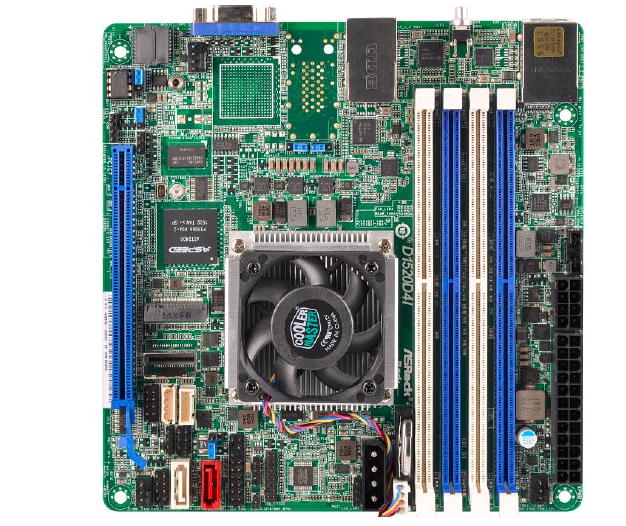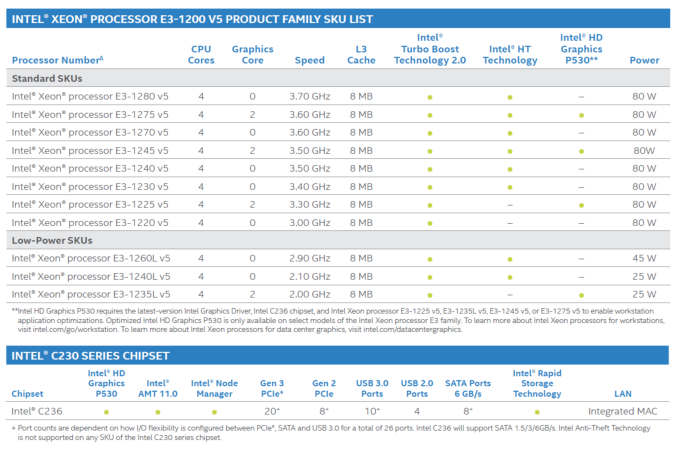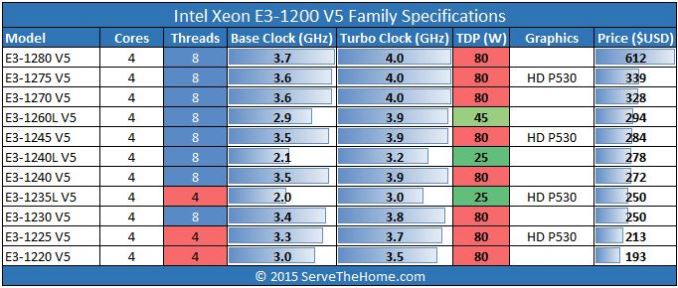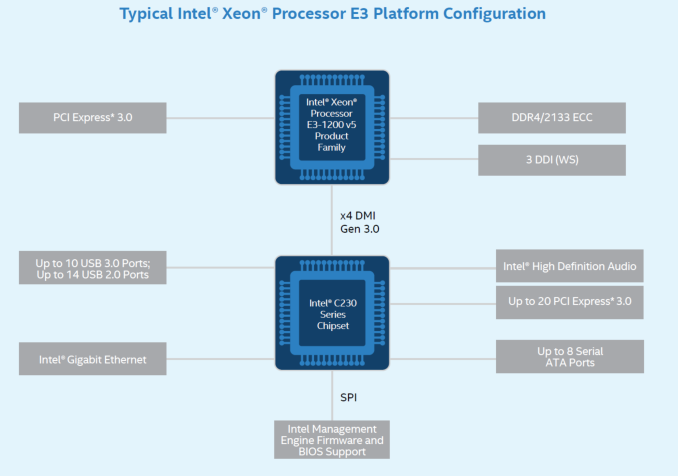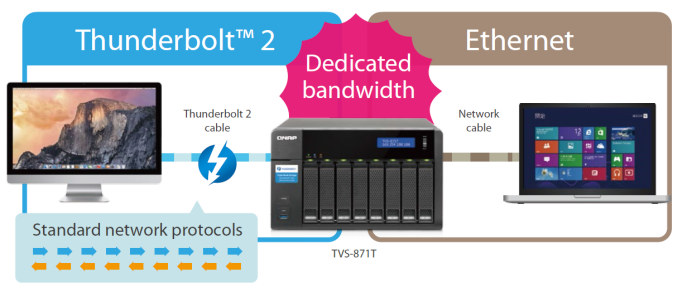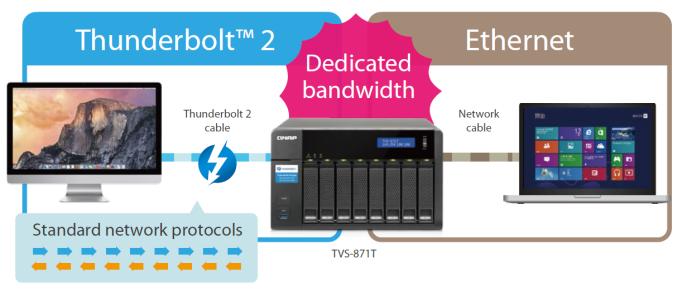ASRock Rack Launches Xeon D Motherboards
Intel’s Xeon D SiP (System-in-package) has turned out to be one of the exciting launches this year in the server CPU space. We have already analyzed Xeon D in detail in our review of the Supermicro SuperServer 5028D-TN4T. Almost all currently available Xeon D systems / motherboards are from Supermicro, but we now have another set of options from ASRock Rack.
The Xeon D family currently consists of two members:
- Xeon D-1520 : 4C/8T Broadwell-DE x86 cores @ 2.2 GHz, 6 MB of L2 cache, 45W TDP
- Xeon D-1540 : 8C/16T Broadwell-DE x86 cores @ 2.0 GHz, 12 MB of L2 cache, 45W TDP
ASRock Rack’s Xeon D lineup consists of one board using the Xeon D-1520 and six boards using the Xeon D-1540. Customers have the option of going with either the mini-ITX (mITX) form factor or the micro-ATX (uATX) form factor. The mITX boards are all compatible with 1U rackmount chassis.
In addition to the motherboard size, the differentiation aspects come in the form of support for different varieties of LAN ports, PCIe slot configurations, additional storage ports using the LSI 3008 HBA and different USB 3.0 port configurations. Unlike the mITX boards, all the uATX boards come with a COM port in the rear I/O.The following tables summarize the features of the various products in the ASRock Rack Xeon D lineup.
mITX Boards
| D1520D4I | D1540D4I | D1540D4I-2L2T | |||
| SiP | Intel Xeon D-1520 | Intel Xeon D-1540 | |||
| RAM | 4x DDR4 DIMM Slots 2133 / 1866 MHz RDIMMs (Up to 128 GB) | ||||
| PCIe Expansion Slots | 1x PCIe 3.0 x16 | ||||
| Storage Controllers | 6x SATAIII 6 Gbps from integrated PCH in the Xeon D SiP (4x via mini-SAS connector) (1x with SATA DOM support) |
||||
| 1x SATAIII 6 Gbps from Marvell 9172 (via M.2 2280 interface) |
|||||
| LAN Controllers | 2x RJ45 1GbE (Intel i210) |
2x RJ45 1GbE (Intel i210) |
|||
| 2x RJ45 10GbE (Intel X557-AT2) |
|||||
| Board Management Controller | ASPEED AST2400 | ||||
| IPMI LAN Controller | 1x Realtek RTL8211E | ||||
| Display Output | 1x D-Sub VGA | ||||
| USB Ports | 2x USB 3.0 Type-A (Rear I/O) | ||||
uATX Boards
| D1540D4U-2T8R | D1540D4U-2O8R | D1540D4U-2T2O8R | D1540D4U-2L+ | |
| SiP | Intel Xeon D-1540 | |||
| RAM | 4x DDR4 DIMM Slots 2133 / 1866 MHz RDIMMs (Up to 128 GB) | |||
| PCIe Expansion Slots | 1x PCIe 3.0 x8 (x16 physical) | 1x PCIe 3.0 x16 | ||
| 1x PCIe 3.0 x8 (x8 physical) | 1x PCIe 3.0 x8 | |||
| Storage Controllers | 6x SATAIII 6 Gbps from integrated PCH in the Xeon D SiP (4x via mini-SAS connector) (1x with SATA DOM support) |
|||
| 8x SAS3 12Gbps from LSI 3008 HBA (via mini-SAS HD connector) |
||||
| 1x SATAIII 6 Gbps from Marvell 9172 (via M.2 2280 interface) |
||||
| LAN Controllers | 2x RJ45 10GbE (Intel X550) |
2x 10G SFP+ Fiber | 2x 10G SFP+ Fiber | 2x RJ45 1GbE (Intel i350) |
| 2x RJ45 10GbE (Intel X540) |
||||
| Board Management Controller | ASPEED AST2400 | |||
| IPMI LAN Controller | 1x Realtek RTL8211E | |||
| Display Output | 1x D-Sub VGA | |||
| USB Ports | 2x USB 3.0 Type-A (Rear I/O) | |||
| 1x USB 3.0 Type-A (Internal Connector) | ||||
| 1x USB 3.0 Header | ||||
These boards are ideal for network and warm storage devices as well as micro-servers. Given the low power nature of the Xeon D platform, some of them can also be useful in home lab settings for experimenting with virtualization or even act as boards for high-end development machines.

